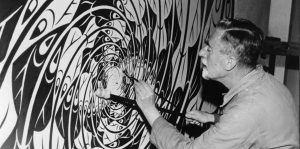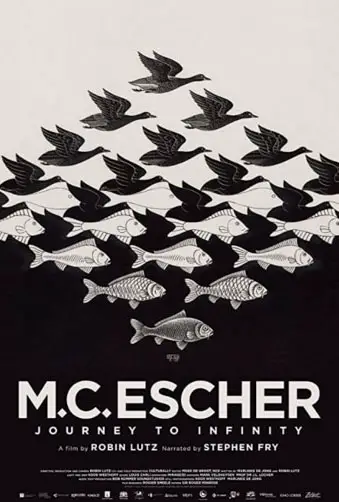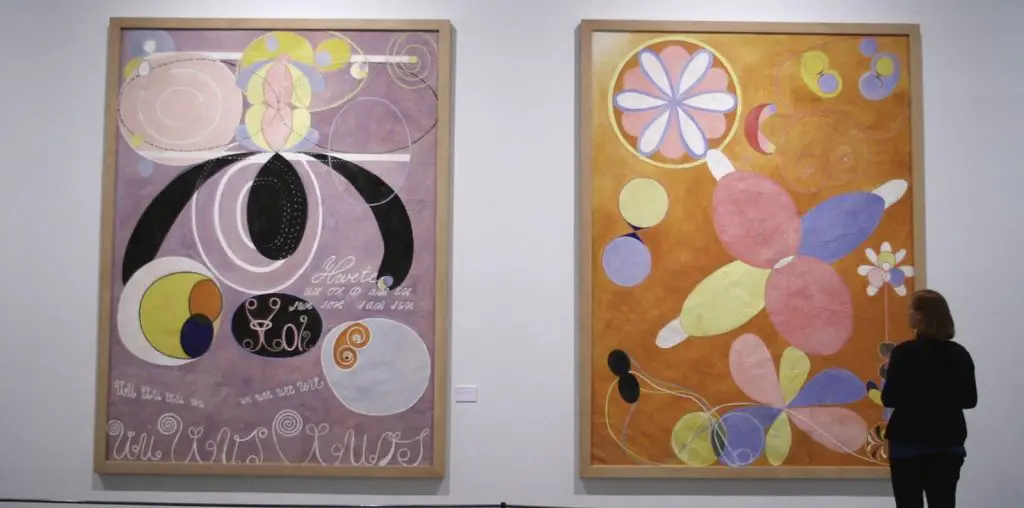
Robin Lutz has created a singular journey into the deep waves of math and art conjured forth by Dutch graphic artist M.C. Escher in M.C. Escher: Journey to Infinity. The film looks at Escher’s early life and education. He was born in Leeuwarden as the youngest son, with his family later moving to Arnhem, where he spent most of his youth. He was an uninspired student but managed to get into the School of Architecture and Decorative Arts in Haarlem. Once there, he quickly shifted his focus to graphic arts.
Those familiar with the famed artist’s sketches, woodcuts, lithographs, and other print works know the accompanying mindf*ck that results from experiencing them. But very rarely have fans heard about the mastermind of these confounding images. For the uninitiated, this documentary serves as a primer into the strange world of Escher’s art. He experimented with many different forms of repeating patterns and became a master at bending perspective in two-dimensional images. He was the Tesla of perspective.
The movie opens with an interview with singer Graham Nash telling the story of discovering the works of Escher and visiting him to compliment his art in person. According to him, Escher demurred, responding, “I’m not an artist. I’m a mathematician.'” He mentions in a letter that he never considered himself an artist, with his passions grounded more in graphic design concepts and mathematically determined patterns. He struggled over sketches for days before translating them into linocuts. He explored tessellation patterns extensively, as well as seeking different approaches to rendering images of landscapes and people.

“…a singular journey into the deep waves of math and art conjured forth by Dutch graphic artist M.C. Escher…”
M.C. Escher: Journey to Infinity is clearly a labor of love for Lutz, who wrote, directed, photographed, and produced it. The result of his efforts is an illuminating look at Escher’s art, his times, and his life outside of graphic arts. This is all told in his own words, voiced by the amazingly expressive English actor Stephen Fry. Escher is documented saying he did not believe anyone could describe him or his art as well as he could, and Lutz honors this by building the narrative from his diary entries, letters, and lectures.
Lutz takes some liberties with the art, including animated versions of the most famous creations, but it works so seamlessly that one must conclude Escher would have done the same had he had an interest in and access to moving pictures. His work manages to convey motion, even when perfectly still, but Lutz infuses it with even more dynamism with the animations. Other movies have also borrowed from Escher. The most famous, arguably, is Labyrinth, where David Bowie’s Goblin King watches characters climb an impossible and infinite staircase created by breaking the rules of perspective for three-dimensional objects represented on a two-dimensional plane.
In his early 60’s Escher’s career took an odd turn when the 1960’s counterculture movement tuned to the unusual designs in Escher’s work and adopted his art with enthusiasm. Some went so far as to colorize his black and white sketches in Day-Glo, suitable for prolonged contemplation under blacklight when one is profoundly high.
The appeal of M.C. Escher: Journey to Infinity is near-universal. It’s hard to imagine not falling under its mesmerizing spell with the same wonder that one would gaze on an Escher print and feel their mind slowly becoming part of the pattern depicted.

"…an illuminating look at Escher's art..."


